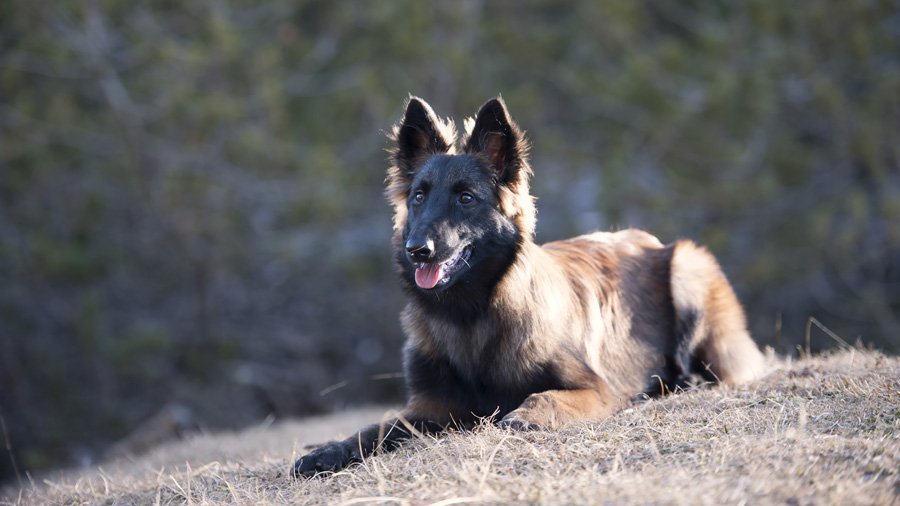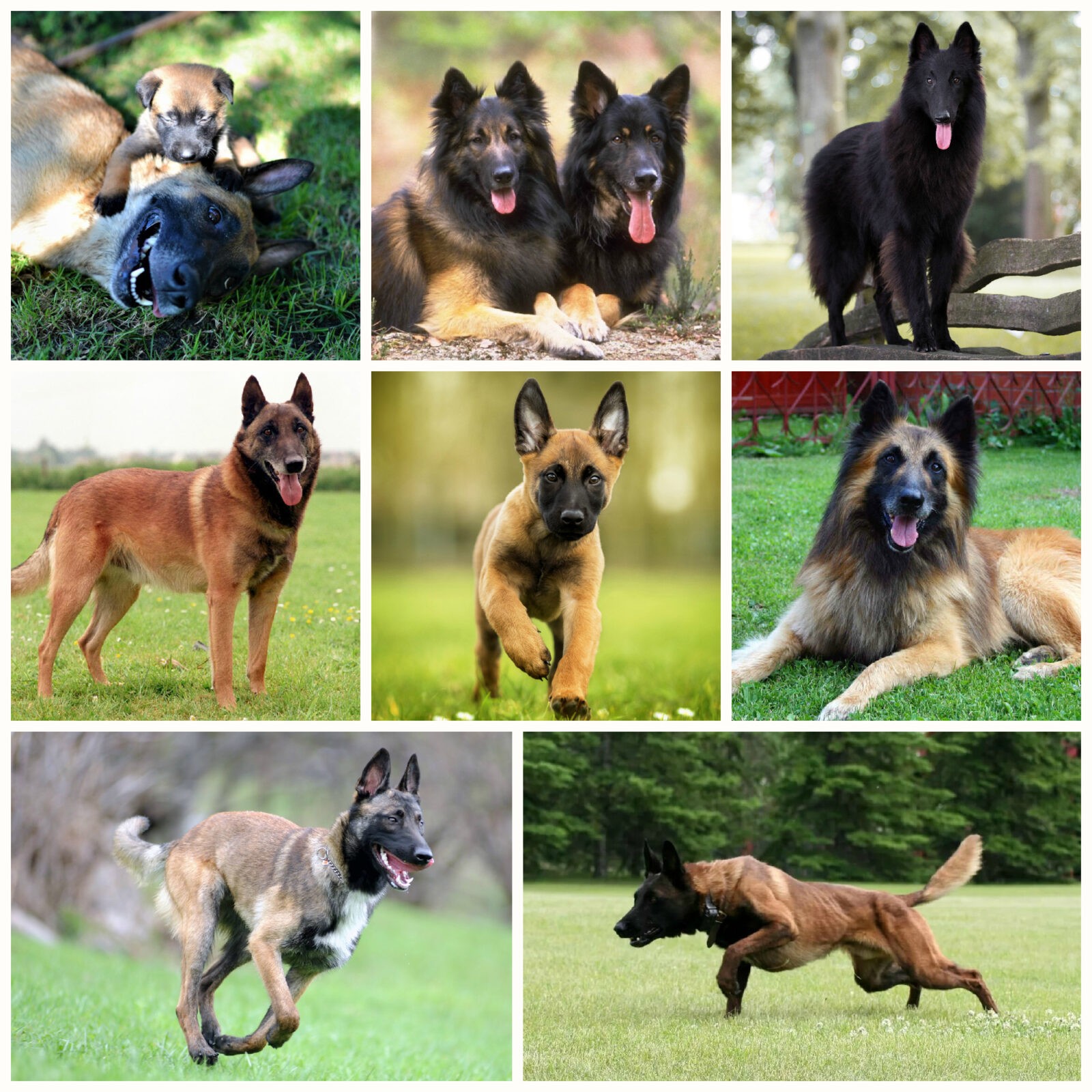
Brief description of the breed Belgian Shepherd
The elegance of this big dog gives her a charming black coat. But this shepherd dog is not only distinguished by elegance! She is very energetic, tries to be constantly on the move, so the owner of such a pet will have to actively engage with the dog.
Such high activity requires huge physical exertion, and therefore a simple walk around the block will not help you! You can choose a dog of this breed only when you are confident in your physical shape, and if you are ready for active physical exercises: running, cycling, long walks. Just like other dogs, the Belgian Shepherd can be easily trained in search and rescue skills.
The Belgian Shepherd loves to be close to his master, always and everywhere to follow him. The animal is very attentive and vigilant, while quite cheerful and playful. With the right training, your dog will never be fearful, timid or insecure. This is a great watchdog. The size of the dog allows you to involve the animal in the protection of not only your family, but also various objects.
The Belgian Shepherd needs to be trained and socialized from an early age. Proper and timely training and training will ensure that the dog will be able to make the right, rational decision in various stressful situations. And this is very important if the question concerns the protection of people, the protection of objects or rescue operations.
Dogs of this breed are quite tolerant of small children, although it is recommended to start a Belgian Shepherd in families where older children, not toddlers. The fact is that these dogs are demanding of others, they want respect for themselves, so small children, due to their age, can offend the animal. Do not forget that the dog is shepherd's, therefore, there is a possibility that during the games the animal will chase small children, bark at them, which can greatly frighten the baby. This behavior of the dog should be stopped, even if we are talking about older children!
Concerning the question of the joint residence of the Belgian Shepherd and cats, it is difficult to give a definitive answer. Due to their genetic propensity, dog likes to chase small animals, but during a homestay it is very common for a Belgian Shepherd and cat become best friends.
As already noted, training and socialization should begin as early as possible. This will allow you to maximize the skills of the animal. During training, you need to show firmness and perseverance, but not any aggression! Rewards in the form of praise and treats - an essential element of learning, do not forget about it!
If you live in your house, where there is a yard, then it must be fenced. This will prevent the dog from leaving the yard unintentionally, as well as the entry of other animals into your territory. An electric underground fence will not work. If the Belgian Shepherd decides to leave the yard, then the electric shock will not stop him. Moreover, such a fence will also not be an obstacle for other people's animals that decide to come into your yard!
If you have bought a Belgian Shepherd, then make sure that your yard is large enough for the dog to run in circles, as he does in his natural environment while grazing! remember, that dog needs not only active exercises, but also your attention. Use every minute to be close to your dog!
basic information
| Breed name: | Belgian Shepherd |
| Country of origin: | Belgium |
| The time of the birth of the breed: | 1891 |
| Type of: | herders and cattle |
| The weight: | 20 – 30 kg |
| Height (height at the withers): | 56 - 66 cm |
| Life Expectancy: | 12 - 14 years old |
|
ICF classification:
|
Group 1, Section 1, Number 15 |
| Puppies price: | 360 – 800$ |
| Most popular nicknames: | List of nicknames for the Belgian Shepherd |
Evaluation of the characteristics of the breed Belgian Shepherd
| Adaptability
(a definition meaning how easily a dog can adapt to changes in life) |
🐶🐶🐶🐶🐶 |
| Shedding level
(Level and frequency of hair loss in the animal) |
🐶🐶🐶 |
| Tenderness level
(The level and amount of tenderness and affection that the dog gives in return for attention to itself) |
🐶🐶🐶🐶🐶 |
| Exercise needs
(Dog's daytime activity level) |
🐶🐶🐶🐶🐶 |
| Social need
(The required number of contacts of the dog with other animals, as well as people) |
🐶🐶🐶 |
| Apartment content
(A factor that determines the level of noise and other inconveniences that a dog can deliver to owners in relation to the size of the apartment to the size of the dog) |
🐶 |
| Grooming
(The number of bathing, brushing, and the number of professional grooming sessions required for the dog) |
🐶🐶🐶 |
| Friendliness in an unfamiliar environment
(Features of the behavior of a dog in a society with strangers or in an unfamiliar environment) |
🐶🐶🐶 |
| Tendency to bark
(Tendency to bark and its frequency and volume) |
🐶🐶🐶🐶🐶 |
| Health issues
(Potential health status of the dog) |
🐶🐶🐶 |
| Territoriality
(The dog's tendency to protect his home, yard, or even his owner's car) |
🐶🐶🐶🐶🐶 |
| Friendliness to cats
(The tendency towards tolerance for cats and decreased manifestation of hunting instincts) |
🐶🐶🐶🐶🐶 |
| Intelligence
(The ability of the dog to think and solve emerging difficulties (not to be confused with learning!) |
🐶🐶🐶🐶🐶 |
| Education and training
(The level of difficulty in training the dog to perform certain actions) |
🐶🐶🐶🐶🐶 |
| Friendliness to children
(A factor that determines how friendly a dog is to children, whether he likes to play with them and tolerate some childish pranks) |
🐶🐶🐶🐶 |
| Game activity
(The concept is determined by its very name, and, as a rule, is found in almost all dogs) |
🐶🐶🐶🐶🐶 |
| Observation
(The ability of a dog to detect the presence of a stranger on its territory) |
🐶🐶🐶🐶🐶 |
| Friendliness to other dogs
(The tendency of the dog to find common language with his other relatives) |
🐶🐶🐶 |
Belgian Shepherd photo:
Origin story
The Belgian Shepherd is one of four herding dog breeds bred in Belgium in the early 19th century. These four breeds of herding dogs include:
- Malinois (fawn-red dog with a black mask);
- Tervuren (a dog with a fawn-red color, long hair and a black mask);
- Laekenois (wire-haired fawn dog);
- Belgian Shepherd or Groenendael (long-haired black dog).
The Belgian Shepherd Club was formed in September 1891. Among other things, his goal was to study shepherd dogs bred directly in Belgium. The first official meeting of the members of the club took place on the outskirts of Brussels in November 1891. At the meeting, after much discussion, professor of veterinary medicine Adolf Reul and the members of the commission decided that the Belgian Shepherd Dog should be classified as a medium-sized dog with well-set triangular ears and dark brown eyes. At the same time, the color of the coat and its length varied.
The pure black color of the Belgian Shepherd was obtained through the breeding work of the breeder Nicholas Rose, which he carried out in his kennel. The Black Belgian Shepherd was bred in 1893. The German Shepherd became known as the Grunendael. The name was given due to the estate of the same name, in which the first black Belgian shepherd lived. It is believed that all modern Belgian Shepherds came from this dog.
Belgian Shepherds gained popularity very quickly, especially among the policemen of New York and Paris, where many dogs of this breed were in the service at the beginning of the twentieth century. But in Belgium itself, shepherd dogs helped customs officers and patrolled the border area.
Personality of the Belgian Shepherd
Maintenance and care
Belgian Shepherds require careful grooming as they shed all year round. It is necessary to comb the coat for 15-30 minutes weekly, but a short daily combing is also required. More intensive care will be required twice a year during the period of active molting.
Warm baths will help shorten the period of seasonal shedding and reduce the amount of hair falling out. Bathe dogs of this breed as needed and only if the dog is very dirty or when an unpleasant smell is felt from it.
Weekly brushing will help keep your teeth healthy and kill bacteria. Among other things, do not forget about the regular trimming of the claws.
Training and education
Although the Belgian Shepherd can sometimes be stubborn and willful, in general these pets lend themselves well to training. They excel in obedience and agility. They perfectly understand a person by gestures and even facial expressions. Such qualities allow these dogs to understand the trainer practically “at a glance”. Often dogs of this breed are used as herding dogs.
Although Belgian Shepherds are well trained, it is still not worth acquiring a representative of this breed for novice dog breeders. These dogs are very cunning and often begin to manipulate people who do not know how to properly behave with a Belgian Shepherd. During training, it is recommended to use rewards in the form of treats.
Health and disease
Potential hereditary diseases can be observed, but are quite rare. The main health problems include:
- Elbow dysplasia: a malformation that results in degeneration of the elbow joint with accompanying forelimb lameness.
- Epilepsy: refers to a group of clinical diseases that result from overstimulation of the brain.
- Hip dysplasia: includes abnormal development or degeneration of the hip joint.
- Hypothyroidism: insufficient production and release of the thyroid hormones triiodothyronine and thyroxine.
- Progressive retinal atrophy: A group of degenerative eye diseases that can lead to permanent blindness in both eyes.
In general, Belgian Shepherds are healthy dog breeds. Their average life expectancy is about 12-14 years. This duration is in line with the average of most pedigreed dogs of a similar size.
Some interesting facts
- When choosing a puppy of this breed, you should not opt for those who are huddled in the corner or show aggression towards their brothers.
- Belgian Shepherds need at least an hour each day to realize their pet's full potential. If you cannot provide your pet with active physical and mental exercises, then most likely you will pay for it with repairs in the house.
- Belgian Shepherds shed twice a year. You will need to brush your pet every week for 15-30 minutes.
- Dogs of this breed can get along well with cats and other dogs, but only if they have grown up with them. These animals have an innate instinct to chase animals.
- This breed should be kept in a fenced yard as they are prone to chasing moving animals and vehicles.
- Belgian Shepherds are very smart and alert. They are often used as herding dogs.
- For pets of this breed, early socialization is important.
- With the Belgian Shepherd, it is necessary to systematically engage and train it. Classes should bring the animal pleasure and positive emotions.
- Due to their high intelligence and special activity, Belgian Shepherds are not recommended for beginner dog breeders. In addition, amateur dog owners may have difficulty grooming a dog's coat, which requires special attention and time.
Nurseries and breeders
We borrowed material from the wonderful site of our partners DOGCATFAN.COM about cats and dogs, the author dogcatfan

